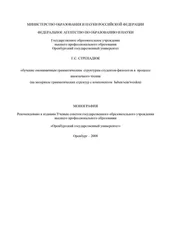Balint, M. (1945). Friendly expanses – Horrid empty spaces. International Journal of Psycho-Analysis, 36, 225—241.
Balint, M. (1960). Primary narcissism and primary love. Psychoanalytic Quarterly, 29, 6—43.
Balint, M. (1968). The basic fault: Therapeutic aspects of regression. London: Tavistock.
Bateson, G., Jackson, D.D., Haley, J., & Weakland, J. (1956). Toward a theory of schizophrenia. Behavioral Science, 1, 251—264.
Baumeister, R.F. (1989). Masochism and the self. Hillsdale, NJ: Lawrence Erlbaum.
Bellak, L., & Small, L. (1978). Emergency psychotherapy and brief psychotherapy. New York: Grune & Stratton.
Beres, D. (1958). Vicissitudes of superego formation and superego precursors in childhood. Psychoanalytic Study of the Child, 13, 324—335.
Bergler, E. (1949). The basic neurosis. New York: Grune & Stratton.
Bergman, P., & Escalona, S.K. (1949). Unusual sensitivities in very young children. Psychoanalytic Study of the Child, 3/4, 333—352.
Bergmann, M.S. (1985). Reflections on the psychological and social functions of remembering the Holocaust. Psychoanalytic Inquiry, 5, 9—20.
Bergmann, M.S. (1987). The anatomy of loving: The story of man’s quest to know what love is. New York: Columbia University Press.
Berliner, B. (1958). The role of object relations in moral masochism. Psychoanalytic Quarterly, 27, 38—56.
Bernstein, D. (1993). Female identity conflict in clinical practice. Northvale, NJ: Jason Aronson.
Bernstein, E.M., & Putnam, F.W. (1986). Development, reliability, and validity of a dissociation scale. Journal of Mental and Nervous Disease, 179, 727—735.
Bernstein, I. (1983). Masochistic psychology and feminine development. Journal of the American Psychoanalyric Association, 31, 467—486.
Bertin, C. (1982). Marie Bonaparte: A life. New York: Quarter Books.
Bettelheim, B. (1960). The informed heart: Autonomy in a mass age. Glencoe, IL: The Free Press.
Bettelheim, B. (1983). Freud and man’s soul. New York: Knopf.
Bibring, E. (1953). The mechanism of depression. In P. Greenacre (Ed.),
Affective disorders (pp. 13—48). New York: International Universities Press.
Bion, W.R. (1959). Experiences in groups. New York: Basic Books.
Bion, W.R. (1967). Second thoughts. New York: Jason Aronson.
Biondi, R., & Hecox, W. (1992). The Dracula killer: The true story of California’s vampire killer. New York: Pocket Books.
Blanck, G., R Blanck, R. (1974). Ego psychology: Theory and practice. New York: Columbia University Press.
Blanck, G., & Blanck, R. (1979). Ego psychology II: Psychoanalytic developmental psychology. New York: Columbia University Press.
Blanck, G., & Blanck, R. (1986). Beyond ego psychology: Developmental object relations theory. New York: Columbia University Press.
Blanck, R., & Blanck, G. (1968). Marriage and personal development. New York: Columbia University Press.
Blatt, S.J. (1974). Levels of object representation in anaclitic and introjective depression. Psychoanalytic Study of the Child, 24, 107—157.
Blatt, S.J., & Bers, S. (1993). The sense of self in depression: A psychoanalytic perspective. In Z.V. Segal & S.J. Blatt (Eds.), The self in emotional distress: Cognitive and psychodynamic perspectives (pp. 171—210). New York: Guilford Press.
Bleuler, E. (1911). Dementia praecox or the group of schizophrenias (J. Zinkin, Trans.). New York: International Universities Press, 1950.
Bleuler, M. (1977), The schizophrenic disorders (S.M. Clemens, Trans.). New Haven: Yale University Press.
Bollas, C. (1987). Loving hate. In The shadow of the object (pp. 117—134). New York: Columbia University Press.
Bomstein, B. (1949). The analysis of a phobic child: Some problems of theory and technique in child analysis. Psychoanalytic Study of the Child, 3/4, 181—226.
Bowlby, J. (1969). Attachment and loss: Vol. I. Attachment. New York: Basic Books.
Bowlby, J. (1973). Attachment and loss: Vol. 11. Separation: Anxiety and anger. New York: Basic Books.
Braude, S.E. (1991). First person plural: Multiple personality and the philosophy of mind. New York: Routledge, Chapman & Hall.
Braun, B. G, (1984). Hypnosis creates multiple personality: Myth or reality? International Journal of Clinical Hypnosis, 32, 191—197.
Braun, B.G. (1988). The BASK (behavior, affect, sensation, knowledge) model of dissociation. Dissociation, 1, 4—23.
Braun, B.G., & Sacks, R.G. (1985). The development of multiple personality disorder: Predisposing, precipitating, and perpetuating factors. In R.P. Kluft (Ed.), Childhood antecedents of mulriple personality (pp. 37—64). Washington, DC: American Psychiatric Press.
Brazelton, T.B. (1962). Observations of the neonate. Journal of the American Academy of Child Psychiatry, 1, 38—58.
Brazelton, T.B. (1980, May). New knowledge about the infant from current research: Implications for psychoanalysis. Paper presented at the meeting of the American Psychoanalytic Association, San Francisco.
Brazelton, T.B. (1982). Joint regulation of neonate-parent behavior. In E. Tronick (Ed.), Social interchange in infancy. Baltimore: University Park Press.
Brenman, M. (1952). On teasing and being teased and the problems of “moral masochism.” Psychoanalytic Study of the Child, 7, 264—285.
Brenner, C. (1955). An elementary textbook of psychoanalysis. New York: International Universities Press.
Brenner, C. (1959). The masochistic character. Journal of the American Psychoanalytic Association, 7, 197—226.
Brenner, C. (1982). The calamities of childhood. In The mind in conflict (pp. 93—106). New York: International Universities Press.
Breuer, J., & Freud, S. (1893—1895). Studies in hysteria. Standard Edition, 2, 21A7.
Brody, S., & Siegel, M. (1992). The evolution of character: Birth to eighteen years. A longitudinal study. New York: International Universities Press.
Brown, R. (1965). Social psychology. New York: The Free Press.
Buckley, P. (Ed.). (1988). Essential papers on psychosis. New York: New York University Press.
Bursten, B. (1973a). The manipulator: A psychoanalytic view. New Haven: Yale University Press.
Bursten, B. (1973b). Some narcissistic personality types. international Journal of Psycho-Analysis, 54, 287—300.
Cameron, N. (1959). Paranoid conditions and paranoia. In S. Arieti (Ed.), American handbook of psychiatry (Vol. 1, pp. 508—539). New York: Basic Books.
Capote, T. (1965). In cold blood. New York: Random House.
Casey, J.F. (1991). The flock: The autobiography of a multiple personality (with L. Wilson). New York: Knopf.
Cath, S.H. (1986). Fathering from infancy to old age: A selective overview of recent psychoanalytic contributions. Psychoanalytic Review, 74, 469—479.
Cattell, J.P., & Cattell, J. S, (1974). Depersonalization: Psychological and social perspectives. In S. Arieti (Ed.), American handbook of psychiatry (pp. 767—799). New York: Basic Books.
Celani, D. (1976). An interpersonal approach to hysteria. American Journal of Psychiatry, 133, 1414—1418.
Chase, T. (1987). When Rabbit howls. New York: Jove.
Chasseguet-Smirgel, J. (1971). Female sexuality: New psychoanalytic views. Ann Arbor: University of Michigan Press.
Chasseguet-Smirgel, J. (1984). Creativity and perversion. London: Free Association.
Chasseguet-Smirgel, J. (1985). The ego ideal: A psychoanalytic essay on the malady of the idea. New York: Norton.
Chess, S., Rutter, M., Thomas, A., & Birch, H.G. (1963). Interaction of temperament and the environment in the production of behavioral disturbances in children. American Journal of Psychiatry, 120, 142—147.
Chess, S., Thomas, A., & Birch, H.G. (1967). Behavior problems revisited: Findings of an anteretrospective study. Journal of the American Academy of Child Psychiatry, 6, 321—331.
Читать дальше










